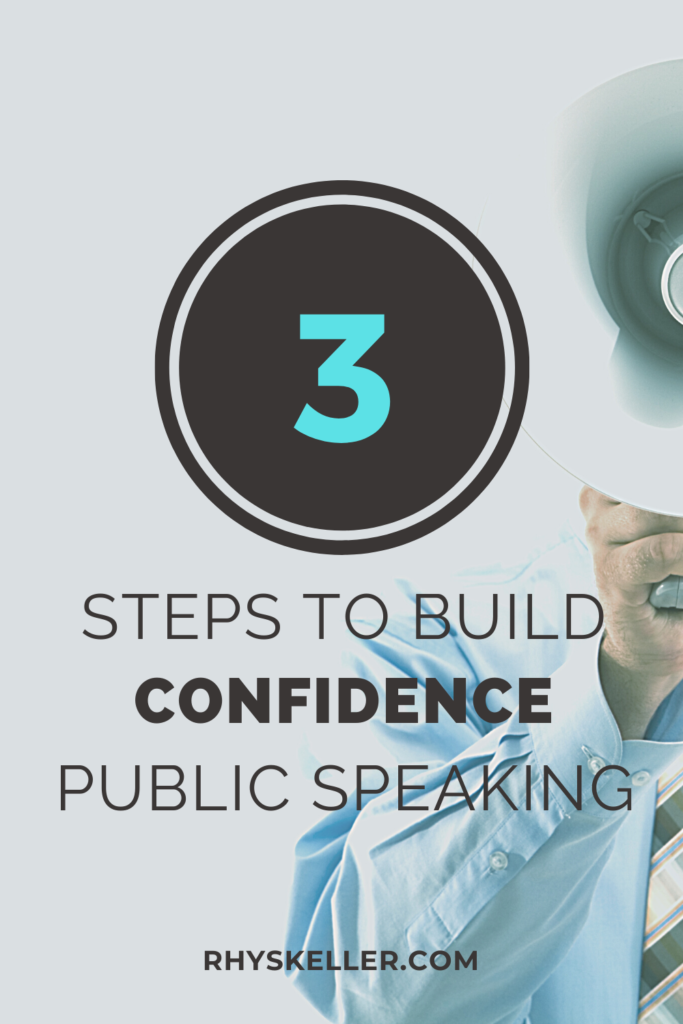Have butterflies visited you an hour before you were supposed to speak publicly? Ever felt nauseous thinking about a speaking engagement? Wonder how so many public speakers and presenters seem flawless on stage and in front of groups small and large? You don’t need to wonder. In fact, you can become a confident public speaker. You can present clear, concise, captivating information to any audience with these 3 steps. No gimmicks. Just timeless, effective tools. These 3 strategies are all you need to become a public speaking role model for others.
When you buy through my links, I may earn money from my affiliate partners. Learn more.
1. Face the facts
“There are only two types of speakers in the world; the nervous and the lying.” – Mark Twain, Author, Speaker, and Entrepreneur
As business and self-development guru Brian Tracy often advises, face the facts. Not the assumed facts, the apparent facts, or hoped for facts. The real facts about speaking in public are that everyone deals with feelings that come along with it. What you feel is normal. What you feel is natural. Whether it be anxiety, nervousness, fear of rejection or disappointing the audience, delivering a message that falls flat or not being able to deliver a message at it.
That’s all normal. I’ve spoken many times to groups small and large. My largest crowd was close to 1,000 people and my smallest has been 1-on-1 training sessions. My most frequent crowd size is 3-30. Regardless of the group size you must present to, you’re going to face the same flurry of emotions that everyone else does.
Keep in mind, though, that public speaking facts come not just in negatives, but positives too. When you mentally, logically, rationally face the potential feelings, good and bad, and potential outcomes, good and bad, you will already be leagues ahead of where you are today.
Begin facing the facts today and ask yourself these three questions.
- What positive and negative emotions do I expect to feel leading up to the presentation, during the presentation, and after the presentation?
- What outcomes are possible if I deliver a good or bad presentation?
- What specific strategies can I implement to give me the greatest possible advantage in delivering a positive presentation?
2. Prepare, prepare, prepare
“If you can’t write your message in a sentence, you can’t say it in an hour.” – Dianna Booher, Author and Communication Expert
The absolute best public speakers all have someone in common. They know what they are going to say to their audience. They know who their audience is. They know how much time they have to deliver their message. They know why they are even speaking in the first place. They communicate effectively. They have, in one word, prepared.
It’s easy to spot a speaker who lacks presentation. Their words come out disjointed. They can’t find themselves in their notes or they read their notes verbatim. Poor presenters often stutter, have abnormally long silences, end their presentation too soon, or repeat themselves without adding value to the message.
But don’t clam up just yet reading that! The opposite is true, too! Great public speakers speak clearly. Their message is easily understood. Their notes are a help rather than a hindrance. Their silences are powerful and last only as long as is necessary to have the desired effect. Their presentations end impeccably at just the right moment and if they do repeat themselves, it’s for you and not for them.
Delivering a great message sails on the wings of preparation. Sure, there are always exceptions who can wing it. But they typically draw their ability and informational mastery from a lifetime of rich experiences. Until you are at that level, or are so entrenched in your topic that you literally can blast off a 30-60 minute talk on any related subject with ease, you have to spend time preparing.
Everyone prepares differently, so here are four ways for you to consider preparing that will enable you to deliver an effective message to a captivated audience.
1. Write down everything you know about the subject and then fill in the gaps and support your understanding with researched experts in the field. Begin this process weeks ahead of your presentation. The sooner the better because the information will guide your eventual discourse.
2. Take all the information you gathered and, after reading it many times over, boil it down to the key substance matter. The majority of knowledge available isn’t necessary to make great strides in most presentation areas. There are always key items that hold more weight than any other. Using this key substance matter, create a working outline of primary points and then re-organize your information into these points. Get rid of anything that seems redundant, unhelpful, boring, or unrelated to the main points. What you’ll have left is a paired down version of your first information gathering attempt but this new document will be far more honed in on your message.
3. As you read and re-read this outline, much of it will begin sinking into memory. If you can remember the story or the point of a sentence or paragraph, cut it out and replace it with a single word or phrase. These words or phrases will be your prompts that, if you forget about them during your presentation, seeing the prompt will prompt you to share the message you intended. The best presentations I’ve given have been delivered with use of prompts rather than having large sections of text to go by. Using prompt words and phrases allows you to speak more personally and flexibly – which is a good thing!
4. Mock present. This means try and give your future speech in the comfort of your own privacy. Try some different introductions. Which one works best? Which feel stuffy and awkward? Do any lend themselves to humor? Try to express your message. Do you forget everything? Maybe you need to look at your notes the entire time. The more you practice, the more you’ll know the material and the less you’ll refer to notes.
3. Just do it already
“There are always three speeches, for every one you actually gave. The one you practiced, the one you gave, and the one you wish you gave.” – Dale Carnegie, Self-Improvement Expert and Corporate Training Pioneer
Building confidence in public speaking comes down at the end to experience. The more you do it, the better you’ll get and the more positive emotions you’ll experience on a consistent basis. I have spoken to people and groups on countless occasions. I still get a bit nervous depending on my mastery of the subject matter and the nuances of the audience.
However, looking back, it’s so much more fun! I used to be terrified of the idea of speaking in front of a group. I would be so worried thinking of all the ways I would plummet to my doom.
But, the old adage holds true. You can beat anxiety with action. The moment I begin writing down what I know, brainstorming my message or talking points, doing research, reading things over and over to set it in my mind, an amazing, incredible thing happens. I get less nervous! And you will to.
The moment you face the facts and start preparing will be the moment you feel anxiety and fear begin fading away into the shadow of your former, less confident public speaking self.
Ultimately, you just have to do it. Until you do it, you’ll never know your strengths or your weaknesses. Without speaking in front of an audience or even group of co-workers, you won’t know what you can work on. Without delivering a toast, or a prayer to a group of family or friends, you won’t be able to see your weak spots. In the realm of public speaking, knowledge and action are power.
Each time you speak, you may feel those emotions rear their ugly heads. But now, you’ve got the tools to deal with them. And in dealing with fear, let me remind you of one last quote from Franklin D. Roosevelt, former President of the United States of America:
“Courage is not the absence of fear, but rather the assessment that something else is more important than your fear.”
Be courageous. The audience needs to hear your message. Face the facts, prepare, and just do it already! You’ll be great and become even greater.
If you liked this article on building confidence in public speaking, please like it, leave a comment, and be sure to subscribe via email. I would love to hear from you and please, if you have any public speaking strategies, leave them for us below.





lmconnors
September 27, 2018Very helpful. I will focus more in preparing next time than delivery…I’m always stiflingly nervous.
Rhys Keller
September 27, 2018You are NOT ALONE! I can assure you if you spend more time in preparation, you are ALSO spending more time on delivery. But, when you do focus primarily ON delivery, your message will be more clear and the information will be more easily retrieved. Keep saying YES to those speaking engagements and next thing you know people will be asking YOU how you’re so confident.